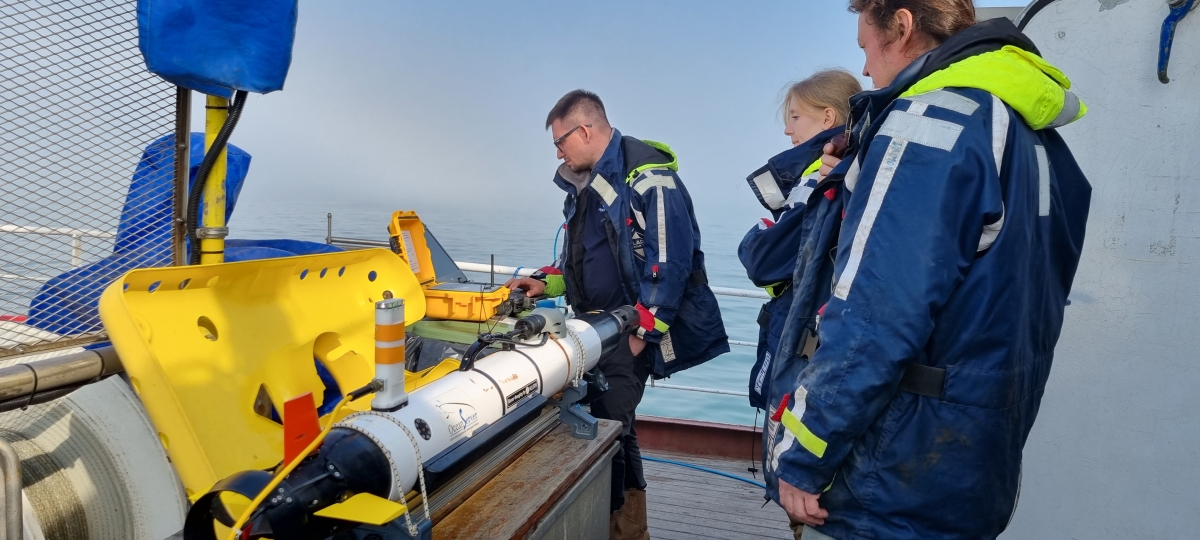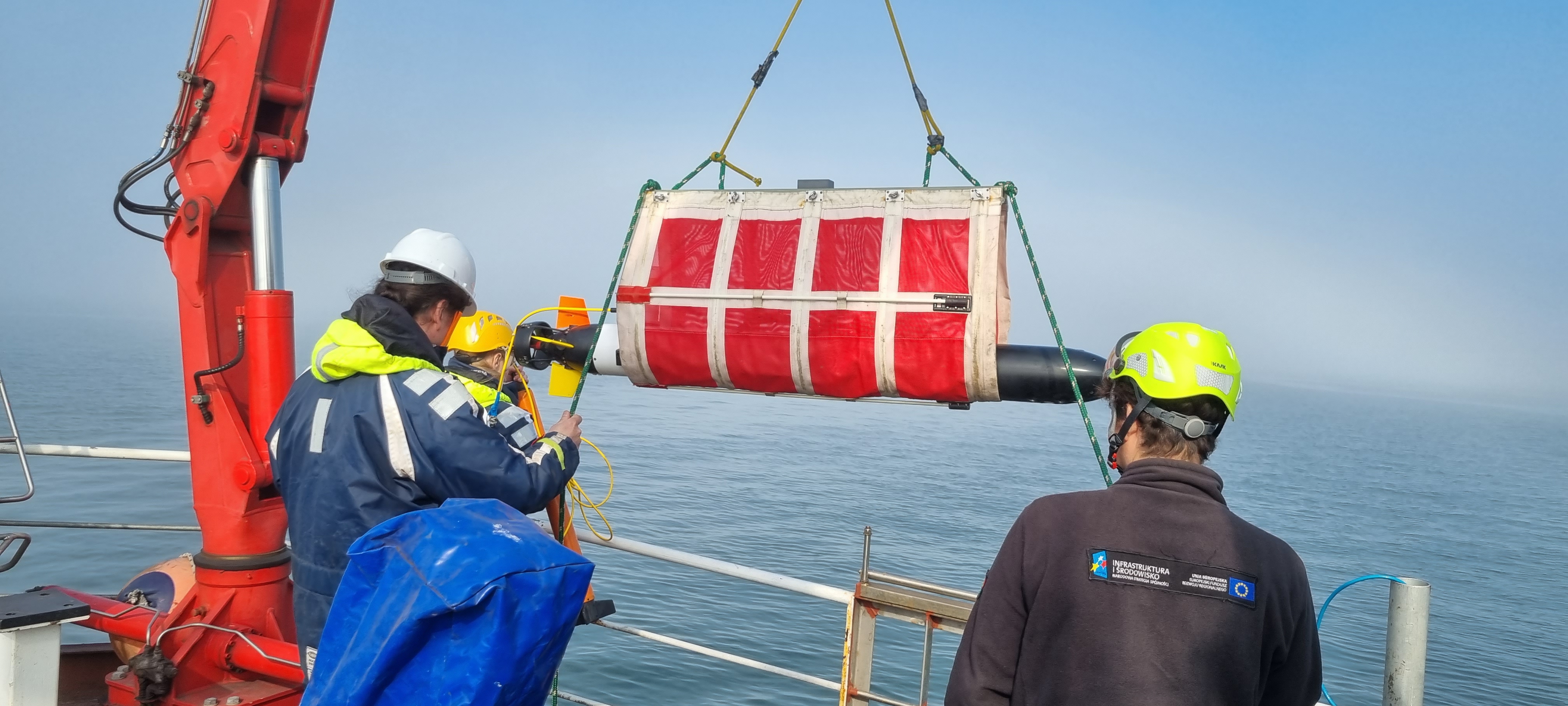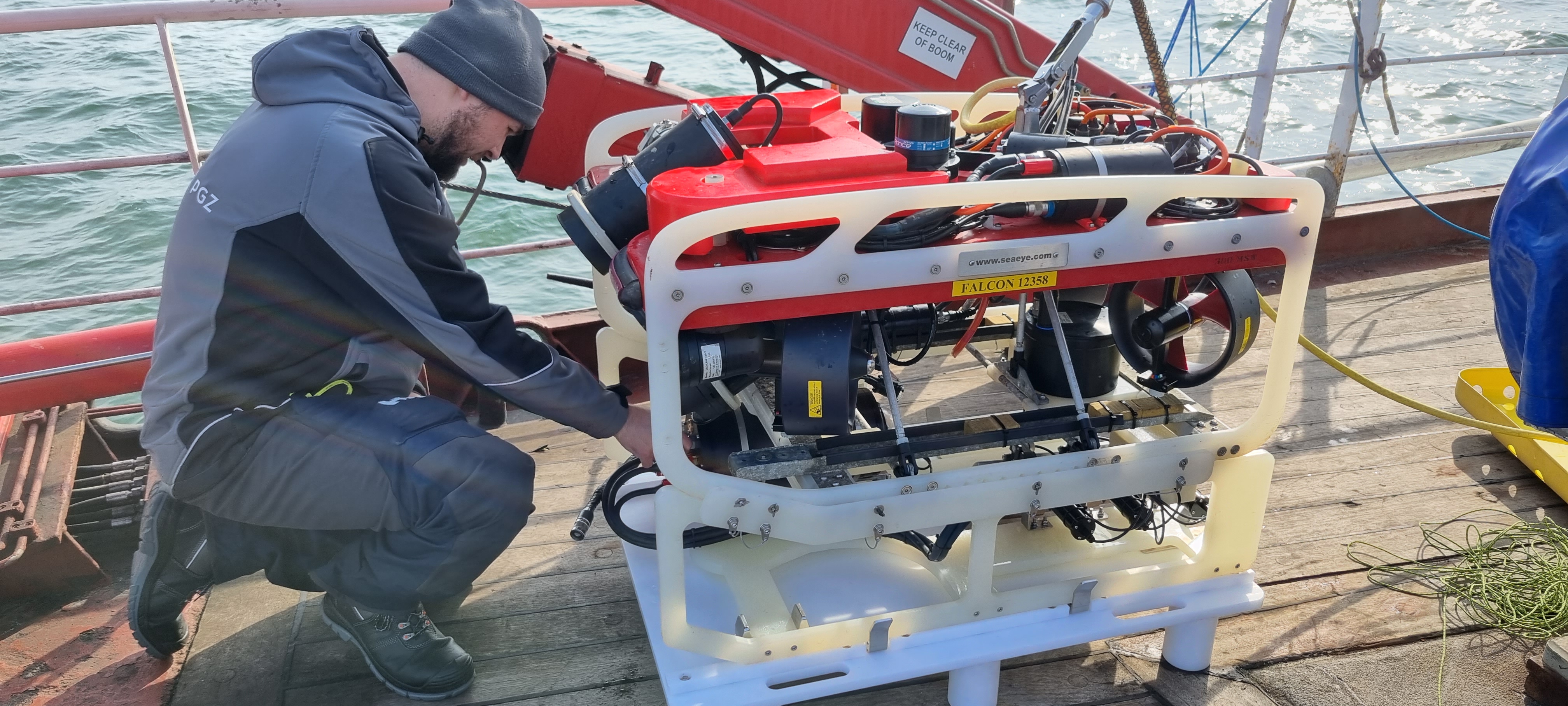
Actions aimed at preventing and eliminating threats caused by the storage or presence of ammunition in the waters of the Baltic Sea have a long history dating back directly to the period of fighting during World War I and II. Polish scientific and research institutes actively participate in the implementation of such projects.
For the purposes of the implementation of the R&D projects of the European Union – Ammotrace/Probannt, in the period 12 – 17/04/2023, specialists from IO PAN and OBR CTM took part in a cruise on board s/y Oceania. The purpose of the cruise was to carry out a number of research activities related to testing prototype solutions, including measurements of hydrological conditions, checking the biodiversity of water areas, monitoring the seabed and collecting samples of seabed sediments.
One of the key undertakings was to test in action, in the natural marine environment, a solution allowing for the collection of samples of the seabed – the Sediment Sampler.
This solution was designed and made by the OBR CTM team and is ultimately a module integrated into the underwater vehicle.
– Estimating the environmental impact of munitions requires very precise collection of sediments. An earlier approach based on scoops and probes lowered from the ship is not possible in the immediate vicinity of the munitions due to the risk of munitions disruption. On the other hand, samplers on an underwater vehicle make it possible to collect samples less than a meter from the facility and measure pollutants at the source – says Professor Jacek Bełdowski, head of the laboratory of contemporary marine ecosystem pollution at IO PAN.
In accordance with the voyage plan, measurements using an underwater vehicle together with a designed device for collecting samples of bottom sediments, took place in the designated areas of the wrecks of the Gulf of Gdańsk, i.e. the tanker Franken and the tugboat Strazak.
The average duration of a single vehicle mission from the moment of immersion to the descent to the seabed (depth of 60 m), sampling and then return to the surface is about 10 minutes. The vehicle performed these types of missions multiple times to confirm the correct operation of the sludge sampler module. The tests ended with a positive result, clearly confirming the proper design of the requirements.
On the basis of the experience gained, modernization conclusions were formulated so as to increase the efficiency of the device's operation during subsequent cruises and make minor corrections related to the optimization of the operator's interface. In addition, thanks to the inspection of the wrecks, the destructive impact of the still active, extracting petroleum materials on the natural environment of the Baltic Sea was once again confirmed. Detailed studies of organisms such as phytoplankton, zoobenthos or macrozoobenthos will take place in laboratory conditions IO PAN.

Photo OBR-CTM

Photo OBR-CTM
The next research cruise is planned for the month of June, i.e. in a few weeks. The schedule indicates a high dynamics of work related to the final development of the solution and its testing at the same time.
The action plan assumes that another element of the system will be used during the next sea departure - the Critical Shear Stress Device (CSSD) designed to determine the maximum speed of bottom currents.
Summary of the current period of project work will be done during the annual project meeting, planned for the turn of August and September 2023, at the OBR CTM headquarters, which will be attended by all partners in the consortium. The aim will be to discuss the achieved results and prepare for the final stage of implementation, which will be finalized by all the solutions included in the assigned Ammotrace/Probannt tasks.


